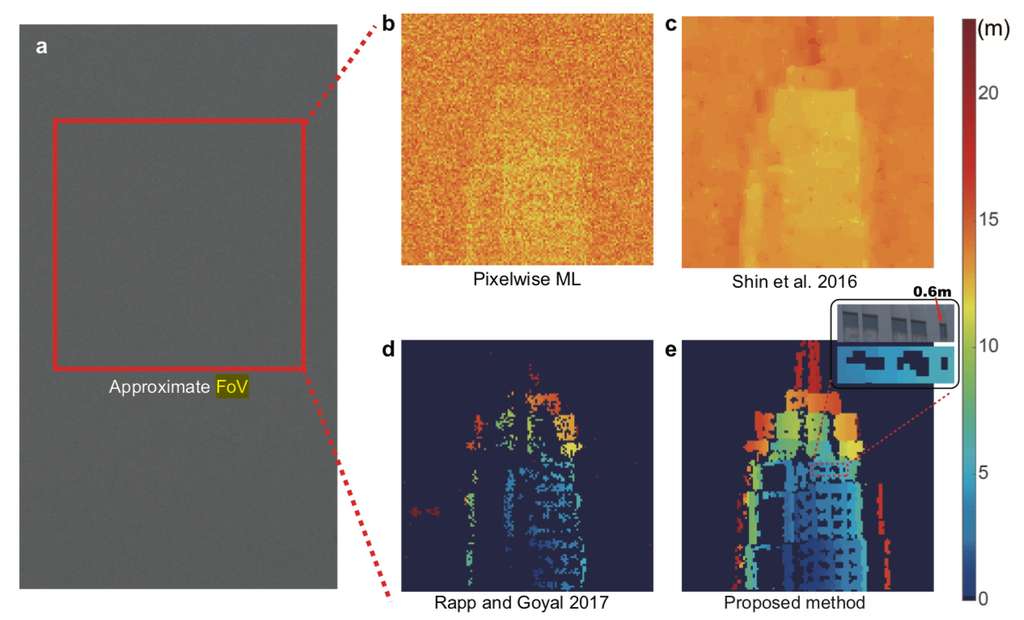By combining a tessellated Lidar telescope and an image reconstruction algorithm, Chinese researchers have developed a device capable of capturing objects at a very long distance, freeing themselves from disturbances of the atmosphere and pollution.
The telescope in lidar (Light Detection And Ranging) photon uses wave infrared to measure the distance to an object function in the time taken by the photons reflected to return.
It is the ideal tool for capturing views of very distant objects. In recent years, considerable progress has been made on sensor sensitivity, with cameras capable of capturing photons more than 10 kilometers apart.
Beyond this, unfortunately, these devices, also costly, do not collect enough light to take sufficiently clear pictures and are parasitized by “echoes” of photons reflecting on the atmosphere, especially in highly polluted environments such as cities.
The team of Zheng-Ping Li, from Shanghai University of Science and Technology (China), has just unveiled a device that fits in a shoebox and able to take 3D photos at 45 km distance, including with minimal visibility.
Their method, published on the prepublication site arXiv, is based on the combination of an improved Lidar and a special algorithm that will reconstruct each pixel of the image.
A wavelength that filters solar photons
Researchers first began to improve the Lidar. However, they started from a very cheap material: an ordinary astronomical telescope of 280 mm focal length and a commercial monophonic laser detector.
The chosen wavelength, 1.550 nanometers (near infrared), has the advantage of not being dangerous for the human eye and of filtering the solar photons which would otherwise submerge the detector. Several other improvements have been made, such as a small mobile mirror that can sweep an object with high accuracy avoiding “cushion” distortion.
